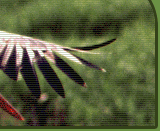A seminar to discuss the new Rural Development Program On September 6, 2006 in the farm "Krastiņi" of Valka municipality a seminar was held where the new Rural Development Program (RDP) for Latvia was discussed by land owners, representatives of the government institutions involved in the development and implementation of the mentioned program (the Ministry of Agriculture, the Rural Support Service, the State Forest Service) as well as by delegates of non-governmental organizations. A seminar to discuss the new Rural Development Program On September 6, 2006 in the farm "Krastiņi" of Valka municipality a seminar was held where the new Rural Development Program (RDP) for Latvia was discussed by land owners, representatives of the government institutions involved in the development and implementation of the mentioned program (the Ministry of Agriculture, the Rural Support Service, the State Forest Service) as well as by delegates of non-governmental organizations. The discussion was focused mainly on two issues how to achieve the financial support for all the management measures required for nature conservation and amount of funding for maintenance of biodiversity in grasslands, that in the current version of the RDP is more than insufficient. In Latvia the RDP is the only source of funding for the long-term management of the protected habitats and for protection of the species related to them. In 2013 the government will have to report to the European Commission on favourable conservation status of the habitats and species included in the Directives. Results to be presented to great extent will depend on whether the measures ensuring such favourable conservation status will be included in the RDP. One of the measures included in the current RDP is preservation of biodiversity in grasslands. Current support payment for this measure is 138 EUR/ha, which added to the other area payments, provided the land owners with the opportunity to preserve the biologically valuable grasslands (BVG) (except the most complex management areas where even such support was inadequate), thus achieving the goal ensuring maintenance of the protected habitats of the EU importance and breeding conditions for the endangered bird species of grasslands. However the new version of the RDP proposes significantly lower funding for the land owners, labeled as "sofa farmers", who maintain the grasslands by cutting the grass every year but keep no livestock. Yet for a corncrake, that has returned from Africa to find its meadow unsuitable for breeding - overgrown with shrubs, the social status of the farmer makes no difference at all. From the aspect of protection of species and habitats as well as from the aspect of landscape conservation the only matter of importance is, that the grassland would be environmentally friendly managed. Currently planned amounts for a hectare managed from 55 euro (for cutting grass) to 118 euro (for pasturing or hay making for livestock) do not allow the land owners to go on with the maintenance of the biologically valuable grasslands. Just opposite interest on some alternative land usage can be caused. On most cases BVG are the most complex areas for management as they are located in places of uneven relief, on steep slopes or can be flooded. The participants of the seminar could themselves make sure of complexity of management of the BVG, when getting acquainted with the pilot management area of grasslands in "Krastiņi", developed within the framework of the LIFE project. An unsettled issue is restoration of grasslands, that currently is not financed under the RDP and is not proposed also in the current version of the new RDP. The participants saw places where removal of shrubs would be really important from the aspect of nature conservation, both to expose old separate oak-trees to the sunlight and for extension of continuous areas of grasslands necessary for meadow birds. Funding for maintenance of the restored areas, optionally receivable in future, is not sufficient to motivate the land owners to cut out the shrubs, especially if the considered areas are comparatively small. Still there are places where cutting off small shrub patches would join several meadows in a one more spacious, thus creating breeding opportunities for the Corncrake or Great snipe, for which wide open areas are important. Another unsolved issue is the funding for management of wooded meadows (which is also one of the habitats of the Habitats' directive), as they are not included in the field blocks and accordingly funding for management is not available. In the currently valid RDP only measures in agricultural lands are proposed, nevertheless protection and management of the forest habitats is not of less importance. Very important measure under the new RDP are planned compensations for restriction of commercial activities in forests. Most of the protected forest habitats need no human interference, still in some, special measures should be taken in order to restore their biological value. During the seminar there were also discussions on including the measures of management of the forest habitats in the RDP, viewing the examples on site. The debate on the new RDP has not been concluded. Hopefully it will give a chance for land owners to manage their lands nature friendly and to preserve the nature values of Latvia. Ilze Vilka | 






